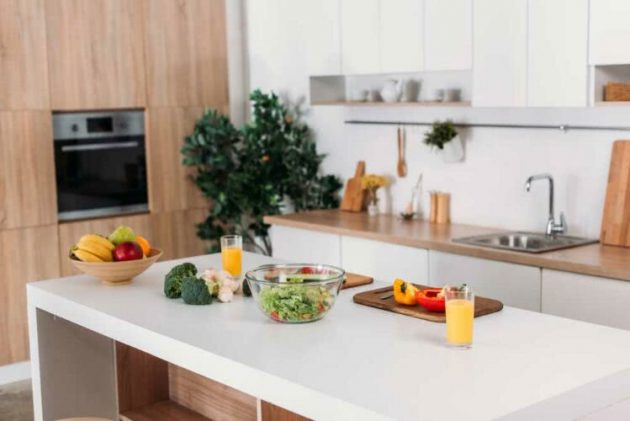Having a sustainable kitchen is much simpler than it sounds. You’ll need to focus on just five magic words: rethink, refuse, reduce, reuse and recycle. And why the kitchen? The kitchen is the environment that produces the most garbage in a house. There is about 1 kilo of garbage produced daily per resident.
It may seem small, but multiply that number by the number of people who live in your house. Then by the number of people in your neighborhood, city, state, country, and even across the planet. Thinking collectively, it is easier to understand the importance of individual actions to contribute to the preservation of the planet and humanity itself.
So, stay here in this post and follow all the tips we brought you to have your sustainable kitchen.
What are the five factors of sustainability?
To understand the tips that we will present to you below, you must understand the importance of the five factors of sustainability. They are the ones who will dictate all the way forward. So let’s understand this quickly.
Rethink
The first R is to rethink. The idea here is for you to assess whether you need the item you want to buy. This is because each new product, whatever it may be, consumed natural resources to be produced, including water and forest areas.
Reflect for a few minutes if you are not just being taken by a trend or if the item you intend to purchase could not be conquered in an alternative way, for example, from a similar used or the reuse of material.
Refuse
After passing the first R you have the power to refuse. Yes! This is powerful. You can refuse everything from buying a new appliance to the blessed plastic bag on the market.
Reduce
Can’t stop buying or refusing? To reduce it. Buy as little as possible and be conscientious to avoid waste.
Reuse
The next r is reuse. Don’t throw anything away before finding out if it can be reused, because there is no “out”.
It can be a stalk or husk of food as well as a package. The more you can extend the shelf life of a product, the more sustainable your kitchen will be.
Recycle
Many people are thinking that recycling is the only way to be sustainable. But this is a myth. Recycling is just one of the r’s of sustainability and, as you can see, it’s the last. That is, only after you have gone through all of the previous steps should recycling be considered. But, still, it is fundamental.
Recycle everything you can when there is no other possibility.
Sustainability in food preparation
Buy from local producers
Encourage family farming and small businesses by buying from local producers, and you still have fresh and almost always organic food.
Use returnable bags
A plastic bag is totally out of fashion. Being fashionable now is using your bag to go to the fair and to the supermarket.
Have a vegetable garden
It can be small or big. The fact is that keeping a vegetable garden at home with the main herbs, spices, and vegetables is super sustainable and healthy.
Learn new recipes
Barks, stalks, and seeds can become key ingredients in a new recipe. This reuse avoids waste and ensures a healthier and more balanced diet.
Defrost naturally
Whenever possible, prefer to defrost foods naturally, inside the refrigerator. Avoid the habit of using the microwave. In addition to being healthier, natural defrosting saves electricity.
Avoid waste
Water, energy, and gas must be used conscientiously. A good example is to leave the dishes to soak to facilitate washing and avoid running the faucet.
Meal planning is a way to use the oven and stove more rationally since it is possible to save gas and energy when preparing more than one food or a larger quantity.

















